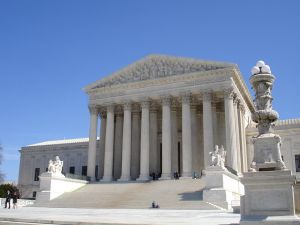 The United States Department of Health and Human Resources (HHS) and the United States Department of Justice (DOJ) recently issued a joint annual report for 2016 (the Report) providing details about the federal fraud and abuse program and, in particular, annual financial recoveries. Fraud and abuse law enforcement efforts continued to be a top priority for the Federal Government and an important means of defraying the rising costs of our nation’s healthcare delivery system. According to the Report, the Federal Government obtained over $2.5 billion in additional revenue in 2016 by way of health care fraud judgments and settlements.
The United States Department of Health and Human Resources (HHS) and the United States Department of Justice (DOJ) recently issued a joint annual report for 2016 (the Report) providing details about the federal fraud and abuse program and, in particular, annual financial recoveries. Fraud and abuse law enforcement efforts continued to be a top priority for the Federal Government and an important means of defraying the rising costs of our nation’s healthcare delivery system. According to the Report, the Federal Government obtained over $2.5 billion in additional revenue in 2016 by way of health care fraud judgments and settlements.
Georgia Healthcare Fraud and Abuse Attorneys
In 2016, the Federal Government’s law enforcement efforts respecting health care fraud were quite robust. The Report highlights that during the year, the DOJ initiated almost 1,000 new criminal health care fraud investigations; over 650 defendants were convicted of a health care fraud based crime; almost 1,000 new civil health care fraud investigations were opened; there were over 550 operational disruptions of criminal fraud organizations and 128 criminal fraud enterprises were dismantled; almost 700 civil actions based on fraud were initiated in United States District Court, and over 3,600 individuals and entities were excluded from participation in Medicare, Medicaid and other federal health care programs. Additionally, numerous audits, evaluations and recommendations were pursued to reduce the Federal Government’s exposure to potential loss based upon fraud.
Background
Financial recoveries obtained from the Federal Government’s fraud and abuse program are used to protect the financial solvency of Medicare. The Health Insurance Portability and Accountability Act of 1996 (HIPAA) amended the Social Security Act, Section 1128(c) to create the Health Care Fraud and Abuse Control Program, which was designed to (and does) combat fraud and abuse in the health care industry. The Report was issued per statutory requirements, as part of the Health Care Fraud and Abuse Control Program.
According to the Report, during 2016 the Federal Government secured over $2.5 billion in recoveries (settlements and judgments) in addition to all economic benefits associated with “additional administrative impositions in health care fraud cases and proceedings” and changes prompted in healthcare programs that reduce the Federal Government’s vulnerability to fraud. Combined with monies received in 2016 from successful resolutions in prior years, over $3.3 billion was recovered for the benefit of the Federal Government and private persons (e.g. qui tam relators). The return on investment for the program is, as of 2016, $5 for each $1 spent in pursuit of the program and its law enforcement activities.
Successful Criminal and Civil Investigations
The Report details many successes of the program’s far-reaching law enforcement activities, including, notably, the Medicare Fraud Strike Force. Though there were many and widely varying factual circumstances that led to law enforcement, a few examples include:
Ambulance and Transportation Services: a Texas skilled nursing facility paid $2.7 million to settle False Claims Act allegations that it received kickbacks from other ambulance companies in exchange for rights to more lucrative Medicare and Medicaid transport referrals.
Clinics: A North Carolina owner of several mental and behavioral clinics was ordered to pay $5.9 million in connection with a fraudulent scheme to improperly bill Medicare by stealing the identities of numerous practitioners and children (and he was sentenced to 20 years).
Device Companies: A Maryland-based splint supplier and its president paid over $10 million to resolve allegations that they improperly billed Medicare for splints provided to patients in skilled nursing facilities.
Durable Medical Equipment: A North Carolina owner of a DME supplier was ordered to pay $2.6 million in restitution (and sentenced to 3.5 years) in connection with an alleged Medicare fraud scheme involving sham DME companies and purchased lists of individually identifying health information, which were then used to submit false claims.
Laboratories: A California company paid over $200 million to resolve False Claims Act allegations that it billed the Federal Government for urine drug and genetic testing that was not medically necessary and paid physician’s kickbacks for referrals of such tests.
Dentist: A pediatric dentist in Connecticut resolved False Claims Act allegations by payment of $1.4 million. The allegations included that x-rays taken at the defendant’s dental clinics were taken by dental assistants who were not properly certified; x-rays by uncertified dental assistants are not payable by the Medicaid program.
Healthcare Providers and Businesses Beware
All health care providers engaged in questionable practices should be concerned about serious risks they face, as the Federal Government is committed to aggressively combatting healthcare fraud and abuse. HHS and DOJ employ sophisticated data mining, predictive analytics, trend evaluation and modeling approaches in their oversight of Federal programs and related law enforcement activities.
If you have questions about this blog post, feel free to contact us for additional information.
Source: Health Care Fraud and Abuse Control Program Report for Fiscal Year 2016
*Disclaimer: Thoughts shared here do not constitute legal advice. Please consult with an attorney to discuss your legal issue.
 Total Health Law Blog
Total Health Law Blog

